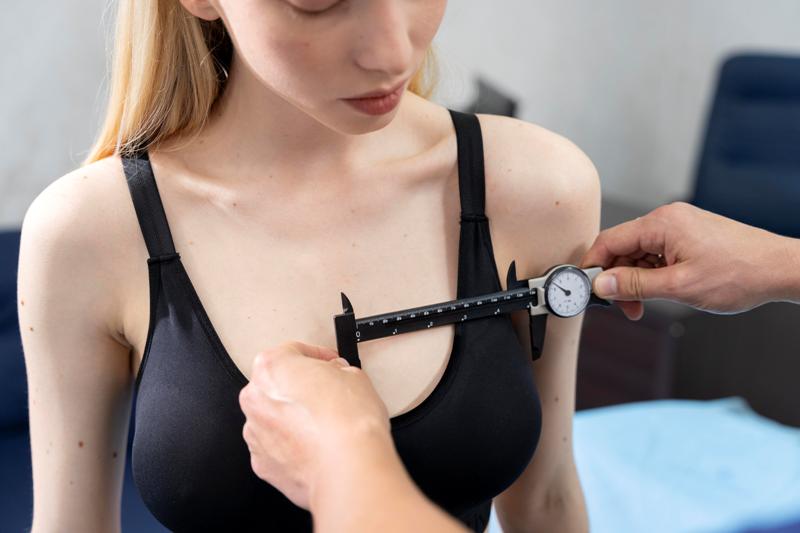Breast augmentation is one of the most popular procedures in cosmetic surgery, aimed at enhancing the size and shape of a woman’s breasts. A specialist in breast augmentation plays a pivotal role in this transformative process, offering surgical expertise and compassionate guidance to patients seeking changes for various personal and medical reasons. We will explore what breast augmentation involves, the qualifications of a specialist, and the nuances of choosing the right procedure to meet individual expectations. Choosing a skilled surgeon ensures that patients receive comprehensive care tailored to their specific needs and aesthetic desires, helping them understand their chosen procedure’s possible outcomes and realistic results.

Understanding Breast Augmentation: Types and Techniques
Breast augmentation involves using breast implants or fat transfer to increase the size of the breasts. This procedure enhances the physical appearance and boosts the patient’s self-confidence. Specialists may employ several techniques, including saline or silicone implants or autologous fat transfer, where fat from another part of the patient’s body is injected into the breasts. The choice of technique will depend on the patient’s body type, aesthetic goals, and medical advice from the surgeon. Each method has advantages and potential drawbacks, such as varying degrees of scarring, recovery times, and effects on breast sensation, which should be discussed during the initial consultation.
Qualifications of a Breast Augmentation Specialist
A qualified breast augmentation specialist is typically a board-certified plastic surgeon with extensive training in cosmetic breast surgery. Certification ensures that the surgeon has completed rigorous education and training standards, understands complex anatomical and physiological aspects of breast surgery, and adheres to a high ethical standard. Patients should verify a surgeon’s credentials through reputable sources to ensure they receive care from a trained professional. Additionally, scrutinizing a surgeon who is an active member of professional organizations is beneficial, as this indicates an ongoing commitment to staying updated on the latest techniques and safety protocols.
The Consultation Process: What to Expect
During the initial consultation, the breast augmentation specialist will discuss the patient’s aesthetic goals, review medical history, and conduct a physical examination. This session is paramount for setting realistic expectations and discussing the potential risks and benefits of the procedure. The surgeon will also help the patient choose the appropriate size and type of implants, considering body structure, skin elasticity, and personal preferences. This process should be thorough and personalized, authorizing patients to ask questions and express concerns about the surgery.
Surgical Techniques and Their Impact
The surgeon may choose between various implant placement techniques, which can affect the outcome and recovery of the surgery. Techniques vary from placing implants beneath the breast tissue or under the pectoral muscle, each offering different advantages concerning look, feel, and interference with mammograms. The incision pattern also varies, including options like periareolar, inframammary, or transaxillary, each having implications for scar visibility and breast function. Decisions regarding the technique are typically based on the patient’s anatomy, the type of implant selected, and the desired aesthetic outcome, with each method offering specific benefits and considerations.
Recovery and Postoperative Care
Postoperative care is paramount for a successful breast augmentation. The recovery period can last several weeks to a few months, with patients typically experiencing soreness, swelling, and sensitivity. Surgeons will provide detailed instructions on caring for incisions, managing pain, and when to resume normal activities. Regular follow-up appointments are crucial to monitor healing and manage complications. Patients should closely follow their surgeon’s recommendations to minimize the risk of complications and ensure a smooth recovery.
Risks and Complications of Breast Augmentation
As with any surgical procedure, breast augmentation carries potential risks and complications. These may include infection, implant leakage or rupture, capsular contracture, and changes in nipple sensation. A specialist will discuss these potential risks with the patient during the consultation process, ensuring they are informed about all aspects of the procedure before proceeding. Being fully informed helps patients make educated decisions and understand the measures taken to minimize risks during surgery.
Impact on Self-Esteem and Psychological Well-Being
Many patients report significant improvements in self-esteem and overall quality of life following breast augmentation surgery. The changes in body image can have profound emotional and psychological benefits, contributing to greater satisfaction in diverse aspects of life, including social interactions and personal relationships. Nevertheless, patients need to have realistic expectations and consider psychological counseling to address any underlying issues linked to body image. Such proactive measures can enhance the positive outcomes of the surgery and support a patient’s emotional health.
Long-Term Considerations and Follow-Up Care
Breast implants are not designed to last a lifetime. Patients may mandate revision surgery to replace implants or to correct any long-term complications. Long-term follow-up with a breast augmentation specialist is paramount to monitor breast health and the integrity of the implants. Discussions about the longevity of the results and future expectations are part of ongoing care. Patients should be aware of the need for periodic reviews and potential future procedures, which are part of maintaining breast augmentation results.
Navigating Post-Surgery Adjustments and Expectations
After breast augmentation, patients may need time to adjust to the physical changes and how these changes affect their lifestyle. Issues such as adjusting to a new body image, managing reactions from others, and transitioning back to work and social activities are common. A good support system and open communication with the surgical team can help manage these adjustments smoothly. Furthermore, wearing the correct supportive garments and engaging in appropriate physical activities, as the surgeon recommends, can aid in a quicker and more comfortable recovery.
Breast augmentation is a deeply personal decision that requires careful consideration of various factors, including the choice of specialist, the type of procedure, and the potential risks and benefits. A breast augmentation specialist is paramount in helping patients make informed decisions and achieve their aesthetic goals safely and effectively by providing comprehensive information and support. Prospective patients are encouraged to conduct thorough research, consult with a qualified surgeon, and consider all aspects of the procedure to ensure the best possible outcome.
